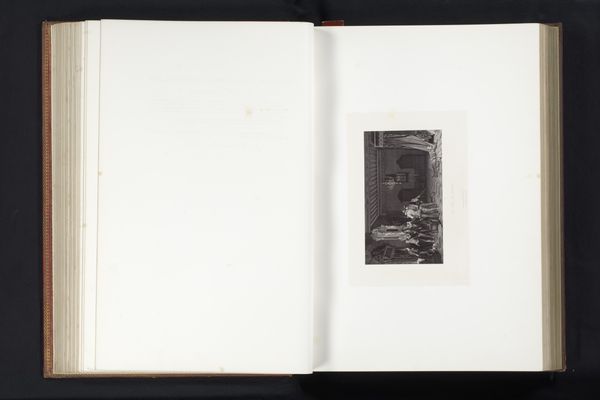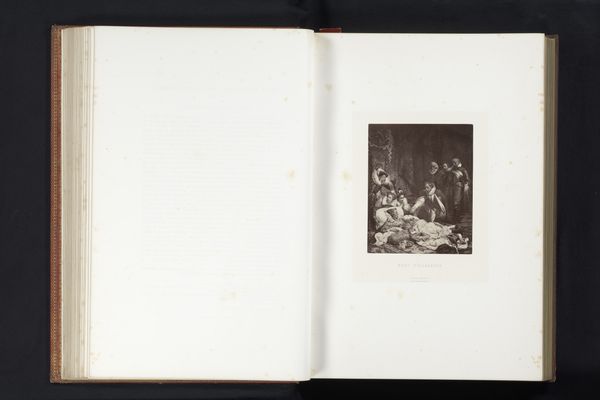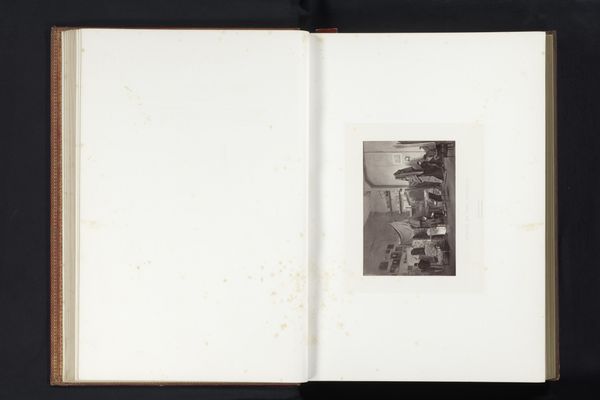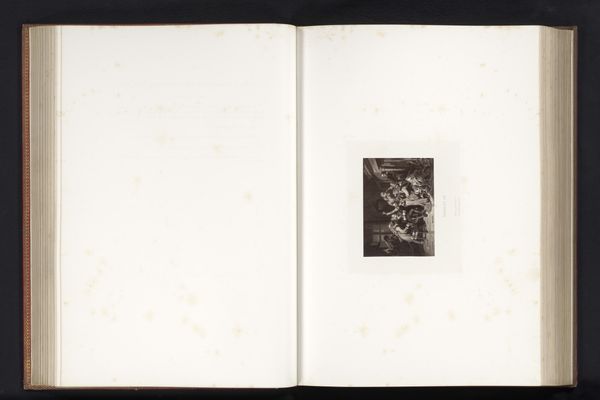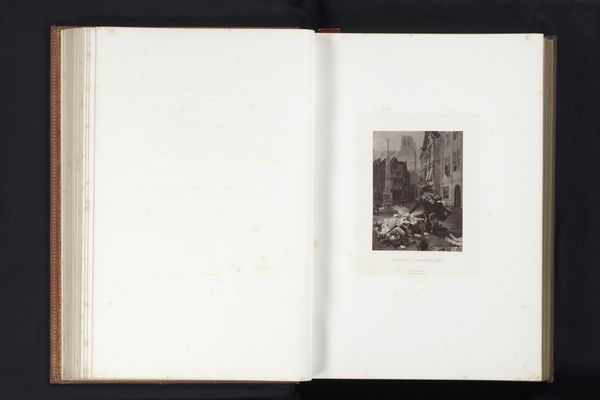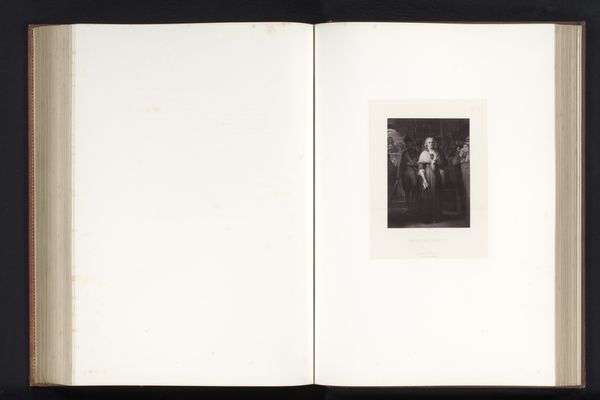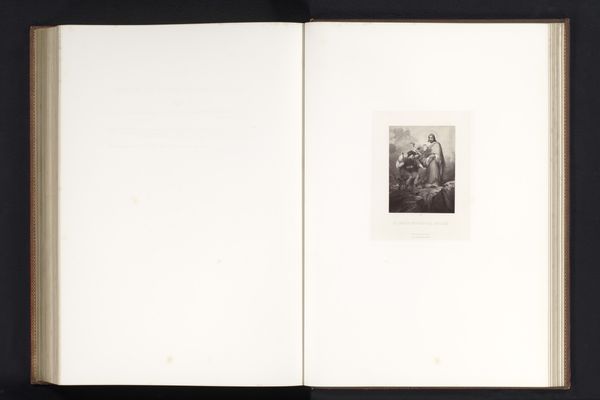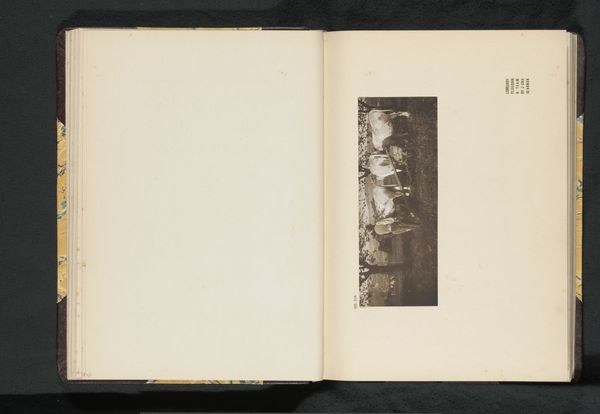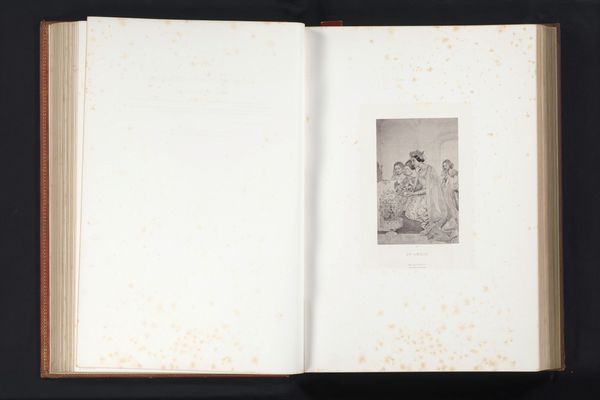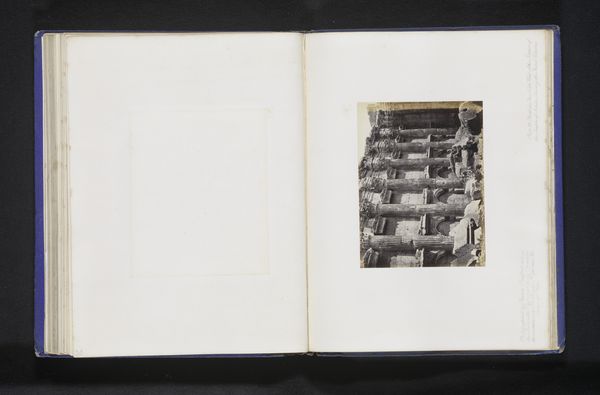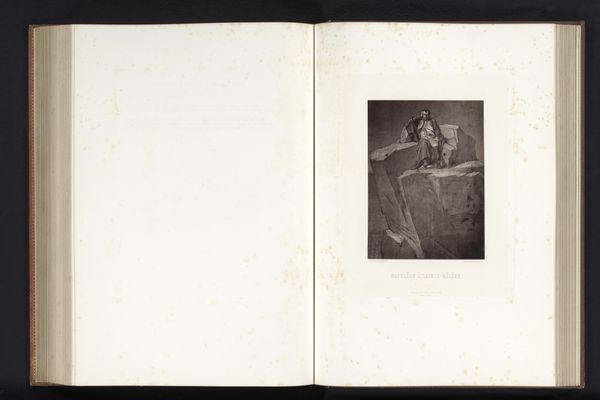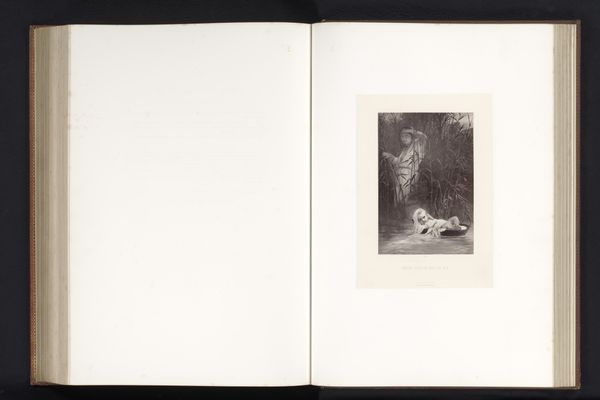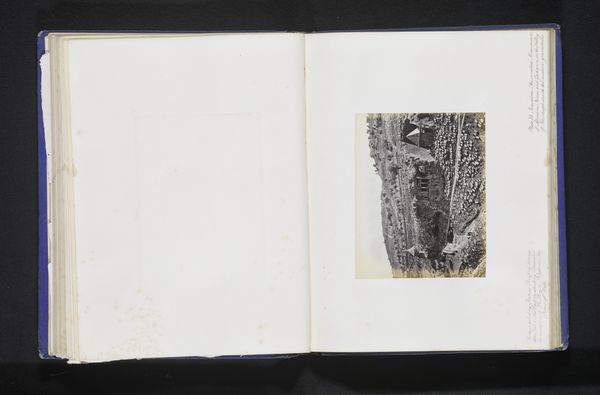
Fotoreproductie van een prent naar een schilderij van Eduard V en Richard van Shrewsbury in de Tower of Londen door Paul Delaroche before 1858
0:00
0:00
Dimensions: height 123 mm, width 146 mm, height 202 mm, width 225 mm
Copyright: Rijks Museum: Open Domain
Curator: Before us is a photographic reproduction of a print, an etching, actually, made after Paul Delaroche's painting of Edward V and Richard of Shrewsbury in the Tower of London, before 1858. Robert Jefferson Bingham is credited with the photographic reproduction. Editor: My immediate reaction is one of stark isolation. The grayscale palette enhances the grimness, and the composition, with those figures huddled together, reinforces a feeling of vulnerability, even despair. Curator: Yes, the print masterfully employs chiaroscuro, creating depth and drawing our eye to the figures’ expressions. Look at how the light falls – it highlights their faces, but the overall darkness engulfs them. It’s a potent display of romantic aesthetics. Editor: I'm struck by the social commentary inherent in portraying these young princes as prisoners. Their youth juxtaposed with their imminent demise offers a clear indictment of power structures at play in the late medieval period and their violent implications. This wasn't simply an aesthetic exercise. Curator: Agreed, but it is worth considering that the composition uses vertical lines created by the bars or the architectural detail of the wall to compress them even further. That spatial dynamic creates tension and a feeling of constraint, independently of any background or sociopolitical agenda. Editor: Perhaps, but such artistic choices inherently speak to lived experience of confinement and oppression. To divorce form from the broader narrative, in this instance, seems disingenuous. Even Bingham's reproductive labor can be seen as having to reproduce and, thus, perpetuate Delaroche's initial statement. Curator: I appreciate your view. It does call into question the power of history painting, as we may now see it as having potential to rewrite history with intentional sentimental framing, as seems the case here. Editor: Absolutely. By focusing on this tragic moment, the image becomes a lens through which we can see wider social issues related to the treatment of children in politics, something still very relevant today. Curator: It really highlights how something we consider to be historical in theme resonates profoundly with us now. Editor: Exactly, that is why bringing a sociohistorical understanding is enriching and vital.
Comments
No comments
Be the first to comment and join the conversation on the ultimate creative platform.
